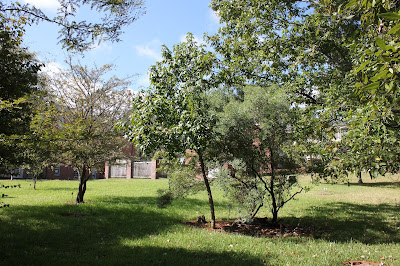 |
| For the past few years we have recorded the development of this sweetgum on the blog. You can read about it here and here. Last year, this individual was tagged for removal, but for one reason or another, it thankfully remains standing. |
 | |
| Looking at the bright green leaves, you wouldn't think that this tree was handicapped, especially if you look a little closer to notice the inconspicuous fruits, the infamous gum balls. |
 |
| Allowing this young tree to stand another year or two ought to insure a replacement for the arboretum catalogue. |
 |
| These little fellows will eat the leaves of nearly a hunded of our native trees, so it's not surprising that they're chowing down on sweetgum, which is a choice of other caterpillars as well. |




